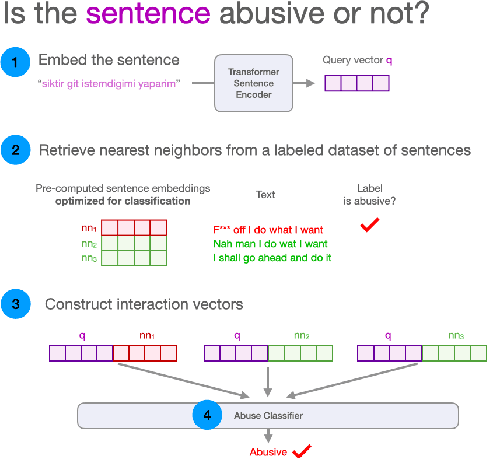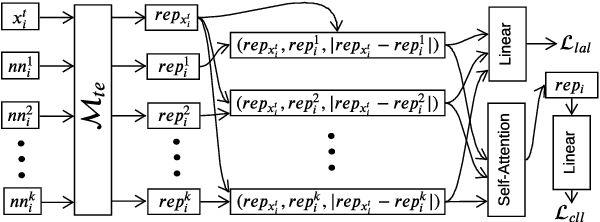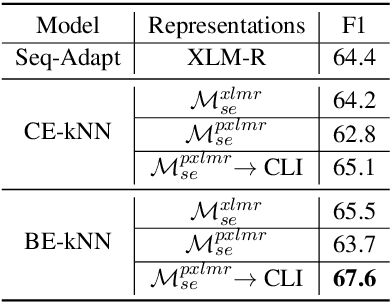A Neighbourhood Framework for Resource-Lean Content Flagging
Paper and Code
Mar 31, 2021



We propose a novel interpretable framework for cross-lingual content flagging, which significantly outperforms prior work both in terms of predictive performance and average inference time. The framework is based on a nearest-neighbour architecture and is interpretable by design. Moreover, it can easily adapt to new instances without the need to retrain it from scratch. Unlike prior work, (i) we encode not only the texts, but also the labels in the neighbourhood space (which yields better accuracy), and (ii) we use a bi-encoder instead of a cross-encoder (which saves computation time). Our evaluation results on ten different datasets for abusive language detection in eight languages shows sizable improvements over the state of the art, as well as a speed-up at inference time.
 Add to Chrome
Add to Chrome Add to Firefox
Add to Firefox Add to Edge
Add to Edge